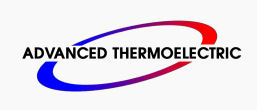(NEMA) standards for various grades of electrical enclosures.
The National Electrical Manufacturers Association (NEMA) defines standards for various grades of electrical enclosures typically used in industrial applications. Each type is rated to protect against personal access to hazardous parts, and additional type-dependent designated environmental conditions. A typical NEMA enclosure might be rated to provide protection against environmental hazards such as water, dust, oil or coolant or atmospheres containing corrosive agents such as acetylene or gasoline. The latest comprehensive list of NEMA enclosure types and definitions is available from the NEMA website.
NEMA Types
1 General-purpose. Protects against dust, light, and indirect splashing but is not dust-tight; primarily prevents contact with live parts; used indoors and under normal atmospheric conditions.
2 Drip-tight. Similar to Type 1 but with addition of drip shields; used where condensation may be severe (as in cooling and laundry rooms).
3 Weather-resistant. Protects against falling dirt and windblown dust, against weather hazards such as rain, sleet and snow, and is undamaged by the formation of ice. Used outdoors on ship docks, in construction work, and in tunnels and subways.
3R As 3, but omits protection against windblown dust.
3S As 3, but also operable when laden with ice.
3X, 3RX, 3SX X indicates additional corrosion protection; commonly used near salt water.
4 and 4X Watertight. Must exclude at least 65 GPM of water from 1-in. nozzle delivered from a distance not less than 10 ft for 5 min. Used outdoors on ship docks, in dairies, and in breweries. X (as 4X) indicates additional corrosion resistance.
5 Dust-tight. Provided with gaskets or equivalent to exclude dust; used in steel mills and cement plants.
6 and 6P Submersible. Design depends on specified conditions of pressure and time; submersible in water or oil; used in quarries, mines, and manholes. 6 is temporarily submersible, 6P withstands occasional prolonged submersion. Neither are intended for continuous submersion.
7 Certified and labeled for use in areas with specific hazardous conditions: for indoor use in Class I, Groups A, B, C, and D environments as defined in NFPA standards such as the NEC.
8 Certified and labeled for use in areas with specific hazardous conditions: for indoor and outdoor use in locations classified as Class I, Groups A, B, C, and D as defined in NFPA standards such as the NEC.
9 Certified and labeled for use in areas with specific hazardous conditions: for indoor and outdoor use in locations classified as Class II, Groups E, F, or G as defined in NFPA standards such as the NEC.
10 MSHA. Meets the requirements of the Mine Safety and Health Administration, 30 CFR Part 18 (1978).
11 General-purpose. Protects against the corrosive effects of liquids and gases. Meets drip and corrosion-resistance tests.
12 and 12K General-purpose. Intended for indoor use, provides some protection against dust, falling dirt, and dripping noncorrosive liquids. Meets drip, dust, and rust resistance tests.
13 General-purpose. Primarily used to provide protection against dust, spraying of water and noncorrosive coolants. Meets oil exclusion and rust resistance design tests.
NEMA vs. IP Ratings
NEMA enclosure ratings are similar to IEC IP ratings however, the scope of each is different. IP ratings are intended to provide guidance on the degree of protection against the intrusion of solid foreign objects and water, as well as the protection the enclosure offers to persons from the hazardous parts inside. As you can see above, NEMA ratings consider additional hazards and conditions beyond the scope of the IP rating system.
